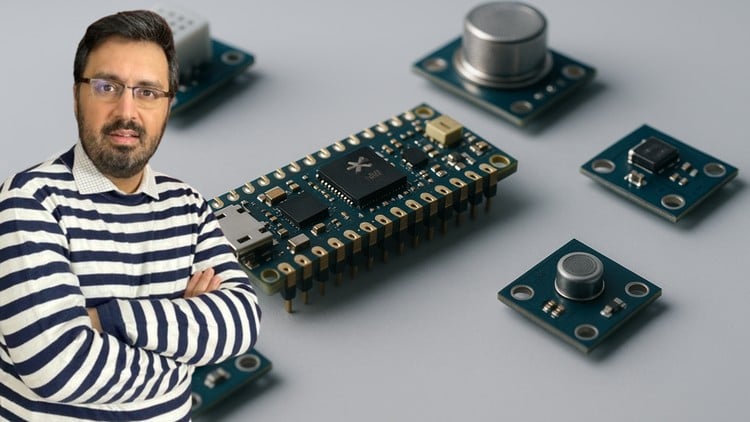
Learn IoT with Edge Devices, Sensors and Real-World Applications in Smart Cities, Industrial Automation & Robotics
What you will learn
Understand the difference between IoT, Edge Computing and Edge Machine Learning
Explore the different types of Input & Output Devices
Recognize the different type of pins on an Edge device – Power, Analog, Digital & PWM
Understand the working of an Analog-to-Digital-Converter (ADC)
Deep dive into the working of different serial protocols – UART, SPI and I2C
Delve into the working and real-world use cases of 9 different sensors – vision, humidity, radiation, gas etc.
Compare & contrast 5 popular edge devices like Arduino Nano 33 BLE Sense, Raspberry Pi 5 etc.
Explore TinyML and understand how it differs from Edge Machine Learning
Add-On Information:
Note➛ Make sure your 𝐔𝐝𝐞𝐦𝐲 cart has only this course you're going to enroll it now, Remove all other courses from the 𝐔𝐝𝐞𝐦𝐲 cart before Enrolling!
- Unlock the fundamental building blocks of the Internet of Things by mastering the interplay between intelligent edge hardware, diverse sensory inputs, and robust communication frameworks.
- Gain hands-on experience constructing and integrating connected systems, moving beyond theoretical concepts to practical, real-world implementations.
- Develop a critical understanding of how data is captured at the periphery, processed locally, and transmitted efficiently, forming the backbone of modern smart applications.
- Demystify the nuances of embedded intelligence, learning how to leverage computational power directly on devices for immediate response and reduced latency.
- Explore the spectrum of embedded sensing technologies, understanding their unique capabilities and limitations in diverse environmental and operational contexts.
- Acquire proficiency in selecting and interfacing appropriate hardware components for specific IoT project requirements, from microcontrollers to sophisticated single-board computers.
- Master the art of data acquisition and signal conditioning, ensuring reliable and accurate information is gathered from the physical world.
- Build a foundational knowledge of embedded systems programming and data management essential for creating responsive and intelligent IoT solutions.
- Discover the potential of decentralized intelligence for applications demanding rapid decision-making and operational autonomy.
- Acquire the skills to design and implement robust communication pathways for seamless data exchange within distributed IoT ecosystems.
- Bridge the gap between raw sensor readings and actionable insights through intelligent local processing.
- PROS:
- Comprehensive exposure to both hardware and communication protocols, offering a holistic IoT education.
- Practical skill development applicable to a wide range of emerging technology fields.
- CONS:
- Potential for overwhelming the novice learner with a broad introduction to numerous device types and protocols in a single course.
English
language